I
Idaliz Baez
Guest
ColdFusion11 helps you build and deploy web and mobile apps. Learn how easily it integrates with DataDirect JDBC drivers to expand connectivity to cloud sources like Salesforce and Oracle Service Cloud.
ColdFusion11 is an application server for building and deploying web and mobile applications. ColdFusion integrates with Progress DataDirect JDBC drivers seamlessly and already supports the latest version of DataDirect drivers for a number of relational databases. The full list is MySQL, Oracle, DB2, Informix, and SQL Server (as you can see on page 115 of their documentation).
If you are looking to expand this connectivity to a cloud source such as Salesforce and Oracle Service Cloud, or even to big data sources such as MongoDB—this tutorial will show you the easy step-by-step guide for expanding your ColdFusion connectivity.
Step 1: Download and install the DataDirect Connect for JDBC drivers
I've put together a JDBC for Windows installation video that you can watch right here:
Step 2: Copy the driver .jar file to your ColdFusion lib folder
Locate the DataDirect JDBC .jar file for the driver that you want to integrate with your Adobe ColdFusion environment by looking in the <DataDirect Installation Directory>\lib\ folder. The default location will look similar to: C:\Program Files\Progress\DataDirect\Connect_for_JDBC_51\lib. Below I have an example of copying the MongoDB and Salesforce driver’s .jar files.
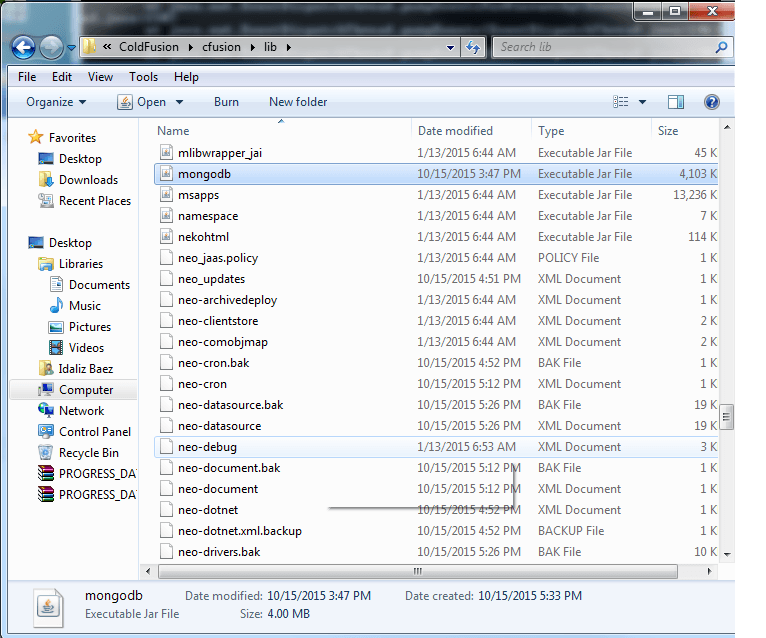

Step 3: Restart the Adobe ColdFusion server
In order for the driver .jar file to be picked up by the application server, you must navigate to the Enterprise Manager > Instance Manager and restart the server.

Step 4: Navigate to the Data & Services > Data Sources section of your ColdFusion application and add a new data source
Enter a Data Source Name and select Other for the Driver. You will then define your data source by entering the JDBC URL, Driver Class, User Name, and Password. I have given an example of the MongoDB and Salesforce driver definitions below. For a driver other than these, please refer to the DataDirect Connect for JDBC documentation for the Driver Class and URL syntax.
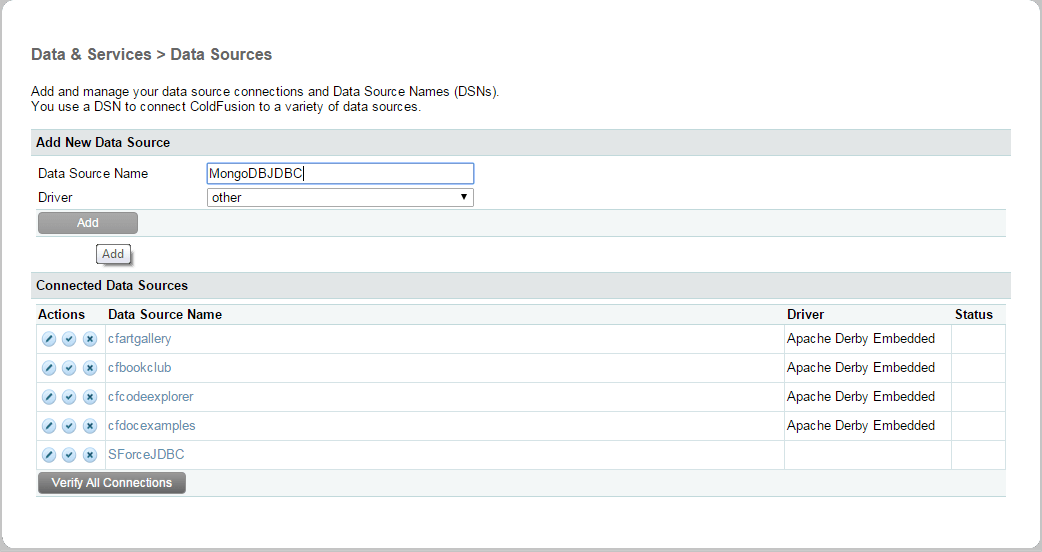
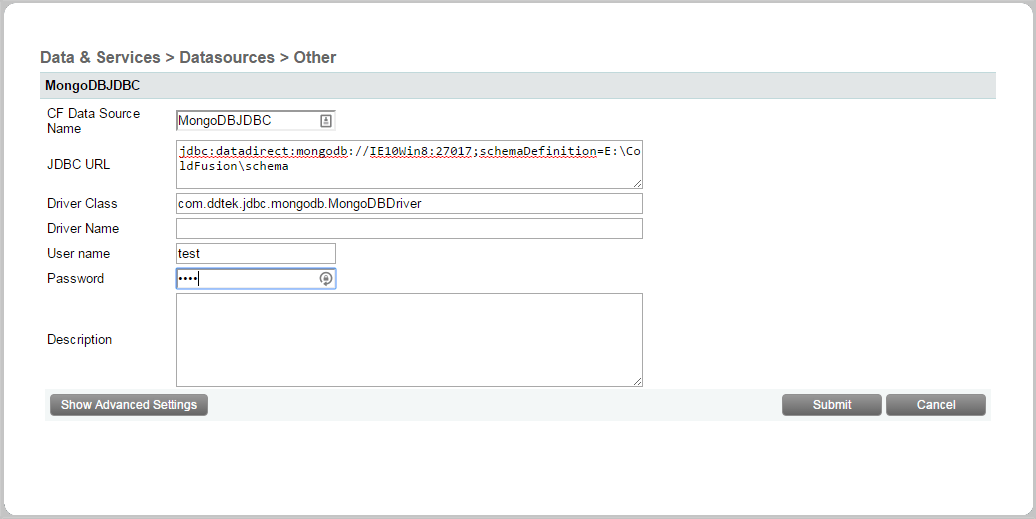
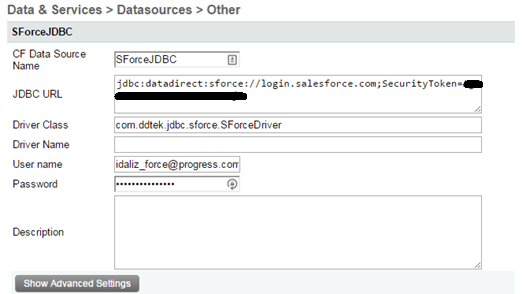
Step 5: Verify your connection
After clicking on Submit and saving your data source successfully, you can click on the check mark to verify the JDBC data source connection. It will appear with an OK to show you that you have successfully made your connection!
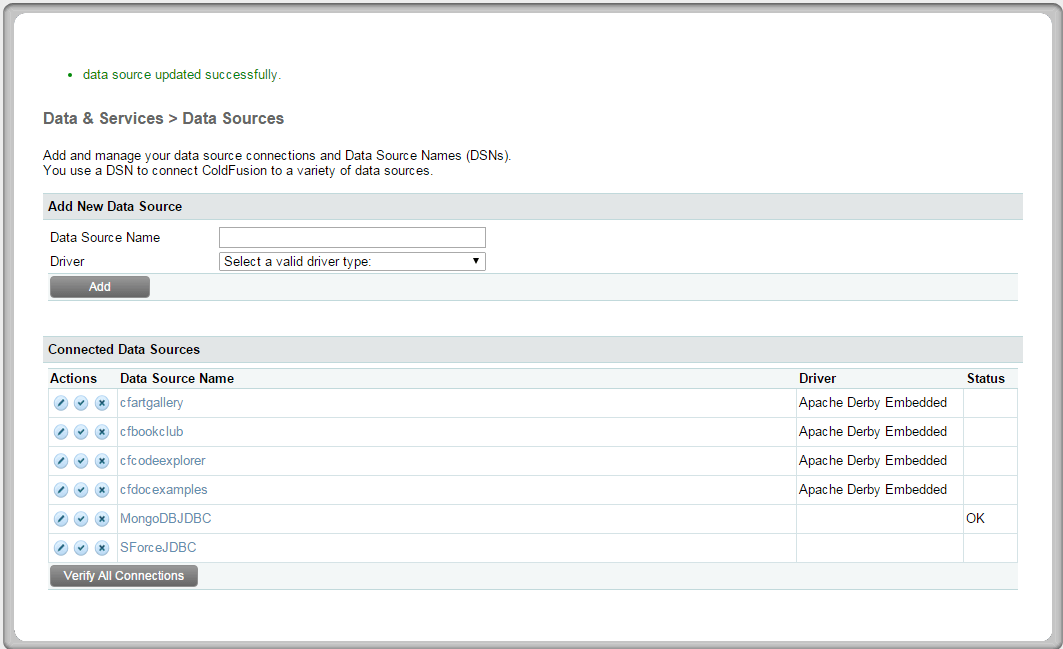

Common Error Messages
If you are seeing an error similar to what is below. Please double check that you have listed the correct Driver Class Name. In this example, the driver class should be com.ddtek.jdbc.sforce.SForceDriver .
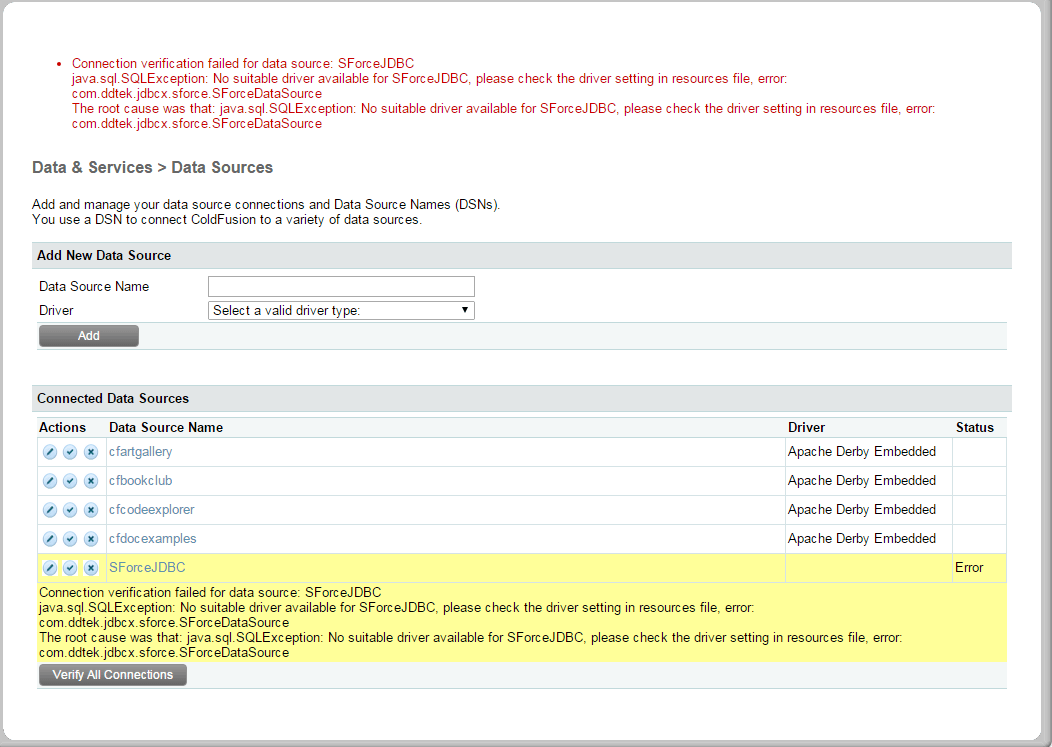
Get Started Today
DataDirect Connect for JDBC drivers offer proven performance, increasing your throughput and CPU efficiency along and memory footprint delivers faster response times and more scalable applications. If you want strong security, quality, and comprehensive coverage then pick up your free trial today!

Continue reading...
ColdFusion11 is an application server for building and deploying web and mobile applications. ColdFusion integrates with Progress DataDirect JDBC drivers seamlessly and already supports the latest version of DataDirect drivers for a number of relational databases. The full list is MySQL, Oracle, DB2, Informix, and SQL Server (as you can see on page 115 of their documentation).
If you are looking to expand this connectivity to a cloud source such as Salesforce and Oracle Service Cloud, or even to big data sources such as MongoDB—this tutorial will show you the easy step-by-step guide for expanding your ColdFusion connectivity.
Step 1: Download and install the DataDirect Connect for JDBC drivers
I've put together a JDBC for Windows installation video that you can watch right here:
Step 2: Copy the driver .jar file to your ColdFusion lib folder
Locate the DataDirect JDBC .jar file for the driver that you want to integrate with your Adobe ColdFusion environment by looking in the <DataDirect Installation Directory>\lib\ folder. The default location will look similar to: C:\Program Files\Progress\DataDirect\Connect_for_JDBC_51\lib. Below I have an example of copying the MongoDB and Salesforce driver’s .jar files.


Step 3: Restart the Adobe ColdFusion server
In order for the driver .jar file to be picked up by the application server, you must navigate to the Enterprise Manager > Instance Manager and restart the server.

Step 4: Navigate to the Data & Services > Data Sources section of your ColdFusion application and add a new data source
Enter a Data Source Name and select Other for the Driver. You will then define your data source by entering the JDBC URL, Driver Class, User Name, and Password. I have given an example of the MongoDB and Salesforce driver definitions below. For a driver other than these, please refer to the DataDirect Connect for JDBC documentation for the Driver Class and URL syntax.



Step 5: Verify your connection
After clicking on Submit and saving your data source successfully, you can click on the check mark to verify the JDBC data source connection. It will appear with an OK to show you that you have successfully made your connection!


Common Error Messages
If you are seeing an error similar to what is below. Please double check that you have listed the correct Driver Class Name. In this example, the driver class should be com.ddtek.jdbc.sforce.SForceDriver .

Get Started Today
DataDirect Connect for JDBC drivers offer proven performance, increasing your throughput and CPU efficiency along and memory footprint delivers faster response times and more scalable applications. If you want strong security, quality, and comprehensive coverage then pick up your free trial today!

Continue reading...
